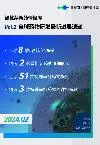GOSERELIN INCLUDED IN THE NATIONAL COMPREHENSIVE CANCER NETWORK® (NCCN) HEAD AND NECK CANCERS GUIDELINES
2023-10-24
临床结果临床2期上市批准放射疗法免疫疗法
DEERFIELD, Ill., Oct. 24, 2023 /PRNewswire/ -- TerSera Therapeutics LLC announced today that The National Comprehensive Cancer Network® (NCCN) Head and Neck Cancers Panel included a category 2B recommendation for goserelin as useful, in certain circumstances, for recurrent, unresectable, or metastatic salivary gland tumors (with no surgery or radiation therapy option) in Version 1.2024 of the Head and Neck Cancers Guidelines released on October 9, 2023.1
"The NCCN Head and Neck Cancers Panel has recognized goserelin as an option for patients with recurrent, unresectable, or metastatic salivary gland tumors," said Nancy Martin, MD, PharmD, Chief Medical Officer at TerSera.
This recommendation is based on results from two Phase 2 clinical studies and a retrospective analysis evaluating the use of goserelin in combination with either antiandrogens or immunotherapy. The use of ZOLADEX® (goserelin implant) in patients with salivary gland carcinoma is investigational, and ZOLADEX has not been approved by the U.S. FDA for this use.
In a Phase 2 study, 31 patients with far locally advanced or recurrent/metastatic and androgen receptor-expressing salivary gland carcinomaandrogen receptor-expressing salivary gland carcinoma were treated with apalutamide 240 mg daily with goserelin 3.6 mg monthly.2 Although this study did not meet the predefined criteria of efficacy (overall response rate), clinically meaningful activity (clinical benefit rate and disease control rate of 50% and 70.8%, respectively) along with well-tolerated safety profile of apalutamide with goserelin was shown in 26 response-evaluable patients.
In the second Phase 2 study, 9 patients with incurable recurrent or metastatic salivary gland carcinoma with at least 20% of tumor cells expressing androgen receptors were treated with goserelin 3.6 mg monthly and pembrolizumab 200 mg every 3 weeks.3 The study concluded that the combination of goserelin and pembrolizumab was well-tolerated and showed preliminary evidence of efficacy in the first stage of the trial given that 2/9 patients had a partial response and 6/9 stable disease for a clinical benefit rate of 88%.
In a retrospective study, 35 patients who received androgen deprivation therapy were treated with bicalutamide 150 mg once daily or the combination of bicalutamide 50 mg once daily with goserelin 3.6 mg monthly.4 It was concluded that goserelin in androgen receptor-positive salivary duct carcinomaandrogen receptor-positive salivary duct carcinoma can be recommended given its response, clinical benefit, and median overall survival benefit as compared with patients treated with best supportive care.
ZOLADEX has not been approved by any regulatory agency for the treatment of salivary gland carcinoma. Its safety and efficacy have not been established for this indication. Please see the full Prescribing Information for ZOLADEX 3.6mg and ZOLADEX 10.8mg and additional Important Safety Information below.
About ZOLADEX® (goserelin implant)
ZOLADEX is an injectable luteinizing hormone-releasing hormone agonistinjectable luteinizing hormone-releasing hormone agonist, used to treat prostate cancer, breast cancer, and certain benign gynecological disorders. First approved in the US in 1989, ZOLADEX is available as a 3.6 mg implant dosed every 28 days or as a 10.8 mg implant dosed every 12 weeks.5,6
INDICATIONS
Palliative treatment of advanced carcinoma of the prostate.
ZOLADEX 3.6 mg is also indicated for:
Management of endometriosis, including pain relief and reduction of endometriotic lesions for the duration of therapy. Experience with ZOLADEX for the management of endometriosis has been limited to women 18 years of age and older treated for 6 months.
Use as an endometrial-thinning agent prior to endometrial ablation for dysfunctional uterine bleeding.
Palliative treatment of advanced breast cancer in pre- and perimenopausal women.
IMPORTANT SAFETY INFORMATION
ZOLADEX is contraindicated during pregnancy unless used for palliative treatment of advanced breast cancer. ZOLADEX can cause fetal harm when administered to a pregnant woman. If used during pregnancy, the patient should be apprised of the potential hazard to the fetus. There is an increased risk for pregnancy loss due to expected hormonal changes that occur with ZOLADEX treatment. ZOLADEX should not be given to women with undiagnosed abnormal vaginal bleeding.
Transient worsening of tumor symptoms, or the occurrence of additional signs and symptoms of breast cancer, may occasionally develop during the first few weeks of treatment. Some patients may experience a temporary increase in bone pain. Monitor patients at risk for complications of tumor flare.
Hyperglycemia and an increased risk of developing diabetes or worsening of glycemic control in patients with diabetes have been reported in men receiving GnRH agonists like ZOLADEX. Monitor blood glucose levels and glycosylated hemoglobin (HbA1c) periodically and manage according to current clinical practice.
Increased risk of developing myocardial infarction, sudden cardiac death and stroke has been reported in association with use of GnRH agonists like ZOLADEX in men. Patients receiving a GnRH agonist should be monitored for symptoms and signs suggestive of development of cardiovascular disease and be managed according to current clinical practice.
Hypercalcemia has been reported in some breast cancer patients with bone metastases after starting treatment with ZOLADEX. If hypercalcemia does occur, appropriate treatment measures should be initiated.
Hypersensitivity, antibody formation and acute anaphylactic reactions have been reported with GnRH agonist analogues.
ZOLADEX may cause an increase in cervical resistance. Therefore, caution is recommended when dilating the cervix for endometrial ablation.
GnRH agonists may prolong the QT/QTc interval. Providers should consider whether the benefits of androgen deprivation therapy outweigh the potential risks in patients with congenital long QT syndrome, congestive heart failure, frequent electrolyte abnormalities, and in patients taking drugs known to prolong the QT interval. Electrolyte abnormalities should be corrected. Consider periodic monitoring of electrocardiograms and electrolytes.
Injection site injury and vascular injury including pain, hematoma, hemorrhage and hemorrhagic shock, requiring blood transfusions and surgical intervention, have been reported with ZOLADEX. Extra care should be taken when administering ZOLADEX to patients with low BMI and/or to patients receiving full dose anticoagulation.
Depression may occur or worsen in women receiving GnRH agonists.
Treatment with ZOLADEX may be associated with a reduction in bone mineral density over the course of treatment. Data suggest a possibility of partial reversibility. In women, current available data suggest that recovery of bone loss occurs on cessation of therapy in the majority of patients.
In women, the most frequently reported adverse reactions were related to hypoestrogenism. The adverse reaction profile was similar for women treated for breast cancer, dysfunctional uterine bleeding, and endometriosis.
The most commonly reported adverse reactions with ZOLADEX in clinical trials for endometriosis were: hot flashes (96%), vaginitis (75%), headache (75%), decreased libido (61%), emotional lability (60%), depression (54%), sweating (45%), acne (42%), breast atrophy (33%), seborrhea (26%), and peripheral edema (21%).
The most commonly reported adverse reactions with ZOLADEX in clinical trials for endometrial thinning were: vasodilation/hot flashes (57%), headache (32%), sweating (16%), and abdominal pain (11%).
The most commonly reported adverse reactions with ZOLADEX in breast cancer clinical trials were hot flashes (70%), decreased libido (47.7%), tumor flare (23%), nausea (11%), edema (5%), and malaise/fatigue/lethargy (5%). Injection site reactions were reported in less than 1% of patients.
For ZOLADEX 3.6 mg: Hot flashes (62%), sexual dysfunction (21%), decreased erections (18%), lower urinary tract symptoms (13%), lethargy (8%), pain (worsened in the first 30 days) (8%), edema (7%), upper respiratory infection (7%), rash (6%), and sweating (6%).
For ZOLADEX 10.8 mg: Hot flashes (64%), pain (general) (14%), gynecomastia (8%), pelvic pain (6%), and bone pain (6%).
In the locally advanced carcinoma of the prostate clinical trial, additional adverse event data were collected for the combination therapy with radiation group during both the hormonal treatment and hormonal treatment plus radiation phases of this study. Adverse experiences (incidence >5%) in both phases of this study were hot flashes (46%), diarrhea (40%), nausea (9%), and skin rash (8%). Treatment with ZOLADEX and flutamide did not add substantially to the toxicity of radiation treatment alone.
Please see Full Prescribing Information for
ZOLADEX 3.6 mg
and
ZOLADEX 10.8 mg
.
You are encouraged to report negative side effects of prescription drugs to the FDA. Visit www.fda.gov/medwatch or call 1-800-FDA-1088. You can also contact TerSera Therapeutics at 1-844-334-4035 or [email protected].
About TerSera Therapeutics
TerSera Therapeutics is a biopharmaceutical company with a focus in oncology, acute care, and non-opioid pain management. Founded in 2016, TerSera is building new cornerstones of care through its portfolio of unique therapeutics, amplifying their ability to deliver meaningful outcomes for patients. For more information about TerSera Therapeutics, please visit www.tersera.com.
References
NCCN Clinical Practice Guidelines in Oncology (NCCN Guidelines®) for Head and Neck Cancers Version 1.2024. © National Comprehensive Cancer Network, IncCancer Network, Inc 2023. All rights reserved. [Accessed October 12, 2023]. To view the most recent and complete version of the guideline, go online to NCCN.org. NATIONAL COMPREHENSIVE CANCER NETWORK®, NCCN®, NCCN GUIDELINES®, and all other NCCN Content are trademarks owned by the National Comprehensive Cancer Network, IncCancer Network, Inc. NCCN makes no warranties of any kind whatsoever regarding their content, use or application and disclaims any responsibility for their application or use in any way.
Honma Y, Monden N, Yamazaki K, et al. Yatagarasu: A single-arm, open-label, phase 2 study of apalutamide (APA) plus goserelin (GOS) for patients (Pts) with far locally advanced or recurrent/metastatic (FLa/RM) and androgen receptor (AR)-expressing salivary gland carcinoma (SGC). JCO. 2022;40(16_suppl):6079-6079.
Patel M, Fujioka N, Pease DF, et al. BTCRC-HN17-111, A phase 2 trial of ADT (Goserelin) in combination with pembrolizumab for patients with advanced salivary gland tumors expressing androgen receptor (Ar). JCO. 2022;40(16_suppl): e18091-e18091.
Boon E, van Boxtel W, Buter J, et al. Androgen deprivation therapy for androgen receptor-positive advanced salivary duct carcinomaandrogen receptor-positive advanced salivary duct carcinoma: A nationwide case series of 35 patients in The Netherlands. Head & Neck. 2018;40(3):605-613.
ZOLADEX (goserelin implant) 3.6 mg prescribing information. TerSera Therapeutics LLC.
ZOLADEX (goserelin implant) 10.8 mg prescribing information. TerSera Therapeutics LLC.
ZOLADEX® is a registered trademark of AstraZeneca or its affiliates and is used herein under license.
©2023 TerSera Therapeutics LLC. All rights reserved.
For more information:
Mark Leonard
[email protected]
847-651-9682
SOURCE TerSera Therapeutics LLC
更多内容,请访问原始网站
文中所述内容并不反映新药情报库及其所属公司任何意见及观点,如有版权侵扰或错误之处,请及时联系我们,我们会在24小时内配合处理。
立即开始免费试用!
智慧芽新药情报库是智慧芽专为生命科学人士构建的基于AI的创新药情报平台,助您全方位提升您的研发与决策效率。
立即开始数据试用!
智慧芽新药库数据也通过智慧芽数据服务平台,以API或者数据包形式对外开放,助您更加充分利用智慧芽新药情报信息。





